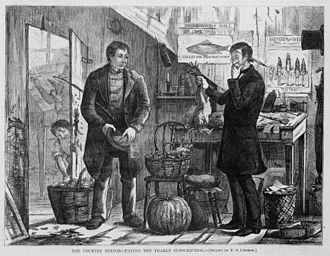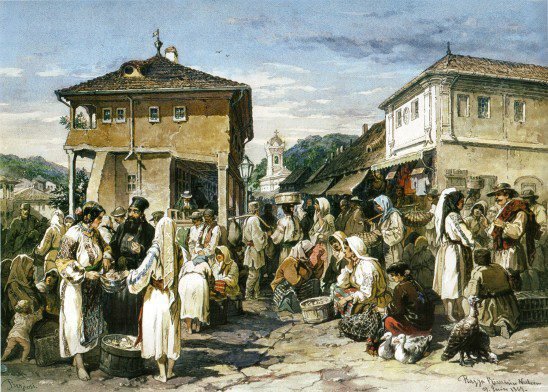Hey there, curious cats! Let's chat about the evolution of cash – from trading goats to tapping phones – it's been a wild ride for money.
Introduction to Money

Picture this: once upon a time, if you wanted a new spear, you had to find someone who’d swap it for your extra fish. That's bartering. But then, humans had a lightbulb moment: why not create something that everyone agrees has value? Enter: money.
Money is the middleman that saves us from lugging around chickens to trade. It represents value and comes in handy for buying, selling, and storing wealth. Plus, it's a scoreboard for how well we're doing at this game called life.
Money is vital because it keeps our society's wheels spinning. Without it, we'd be back to bartering, and who wants to trade a cow for a smartphone?
So, let's fast-forward through centuries of coins jingling in pockets, banknotes folded in wallets, to today, where a single click can shoot dollars across cyberspace.
Stay tuned as we dive into the barter system, history's own swap meet!
Barter System

Imagine strolling into your local market, lugging a sack of potatoes, eyeing a shiny new tool. Barter was the original 'you scratch my back, I'll scratch yours.' No cash needed, just goods exchanged for other goods.
But it wasn't exactly grab-and-go. You could be stuck with your spuds for eternity if no one fancied them for their wares. Enter the biggest party pooper in barter town: "double coincidence of wants." This mouthful meant you needed to find someone who not only loved your goods but also had exactly what you wanted. Tough cookies!
Plus, how many eggs equal a cow? Who decides? Barter was messy when it came to the nitty-gritty of value.
History's full of these quirky swaps. Take soldiers in ancient Egypt who were paid in beer – cheers to that! And, did you know the Aztecs used cocoa beans to snap up goodies? Chocolatey currency, anyone?
From Barter to Bucks

Fast-forward, and humanity had an 'aha!' moment. We created money – a universal thumbs-up for value that everyone could agree on. No more carrying chickens under your arms to trade for wheat.
Money became the shiny new ticket to trade, turning "what's this worth?" headaches into simple, smooth transactions. Coins from Lydia, banknotes from China – the world got on board, and the market never looked back.
So there you have it, folks. Money marched right in, took barter's messy room, and turned it into a sleek, organized office. And just when we got comfy with coins and notes – digital dough entered the chat.
Well, We dive into the gloriously shiny world of coins and how they tossed the barter system right out of the marketplace.
Ancient Cash Innovators
The tale begins around 600 B.C., in the Kingdom of Lydia – today's western Turkey. The Lydians had a nugget of genius: stamped lumps of a gold and silver mix, called electrum, and boom – coins were born.
Neighboring Greek city-states thought, "Hey, that's pretty smart!" and started minting their own metal moolah. By the end of the century, using coins was all the rage in the Mediterranean boutique.
Metal Money Makeover
Ancient coins were like little pieces of art, crafted from precious metals. We're talking gold, silver, and electrum – not the stuff you'd find in your sofa cushions. These materials didn't just jingle satisfyingly in pockets; they were valuables themselves, often guaranteeing the worth of the coin. High trust in the coins' value meant they were accepted far and wide, unlike the IOU note from your forgetful neighbor.
Crafting coins involved an intricate dance of metallurgy and politics. Emperors and rulers stamped their selfies – okay, profiles – on the coins as a power move, sort of like ancient influencers but with a kingdom behind them instead of just followers.
Coinage and Culture: The Ripple Effect
Now, this switch to coins? Revolutionary. Markets had a blast, expanding like never before. No more bartering your cow for three sacks of barley. "Just toss me a handful of those coins," the farmer would say, and everyone knew exactly what it meant.
Coins also spiced up the political stew. Rulers controlled the mints, so the money flow was their chessboard. More coins could mean a booming economy, but it could also mean inflation if they got a bit mint-happy.
Culturally, these little shiny wonders were changing the game. They turned into a canvas, showcasing what a civilization valued – gods, leaders, or legendary heroes, all wrapped up in pocket-size propaganda. They boosted the feeling of belonging, of being part of an empire, with the coin as your membership card.
And there we have it, the coin's journey from bling to, well, more functional bling. They kicked off a financial revolution that we're still riding today, minus the heavy pockets.
Next up on our journey through the vault of value: Paper Money – The Plot Thickens. Stick around, coin collectors and history enthusiasts!
Hey there, fellow history buffs! Let’s take a thrilling ride on the time machine and zoom in on one of the greatest inventions humanity has ever stumbled upon – paper money! Strap in, as we're about to uncover the story of how a few sheets of paper revolutionized the way we deal with dough!
The Introduction of Paper Money
The origins of paper money in ancient cultures
Can you imagine a time when the jingle-jangle of coins was the only music to a merchant's ears? Well, that all changed when the Chinese, those ancient innovators, got a little tired of lugging around weighty metal coins. During the Tang Dynasty, they began playing with the idea of paper money, but it wasn't until the Song Dynasty that this idea truly took flight. Picture this: Notes made of paper that you could actually spend like coins! Merchants started issuing these bad boys, ushering in a whole new era of convenience and commercial pizzazz!
The spread of paper money around the world
Now, good news travels fast, and paper money was no exception. Thanks to the Silk Road (the ancient version of global express shipping), paper bills started popping up all over - from Asia to the Middle East, and finally to Europe. It took a while to catch on, though. Europeans, ever the skeptics, raised their eyebrows until the 17th century when banks started cutting down forests (not really) to issue banknotes. These weren't just any slips of paper, though – they were covered in fancy designs and promises of value, making everyone’s pockets a whole lot lighter (literally) and their trades smoother.
Paper money during the colonial and industrial periods
Moving swiftly on, the age of explorers and monogrammed handkerchiefs – the colonial period – saw economies growing as fast as empires. With the New World came new needs, especially the need for a more adaptable form of cash. Enter stage left: the Bank of England in 1694! These folks came up with the genius idea of standardized notes to replace clunky coins. Then, as the Industrial Revolution kicked in, the world saw a boom in business like never before. Industries were rising, chimneys were smoking, and paper money? Well, it was the only way to keep up with all this explosive growth.
And just like that, from its humble beginnings, paper currency catapulted to stardom, setting the stage for the economic systems we see today. From small slips of paper in ancient China to the banknotes folded in our wallets, paper money has had quite the journey – talk about a globetrotter! Stay tuned for more money tales that will make your banknotes feel like pieces of history!
TBC🔥